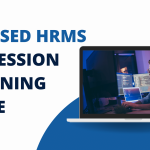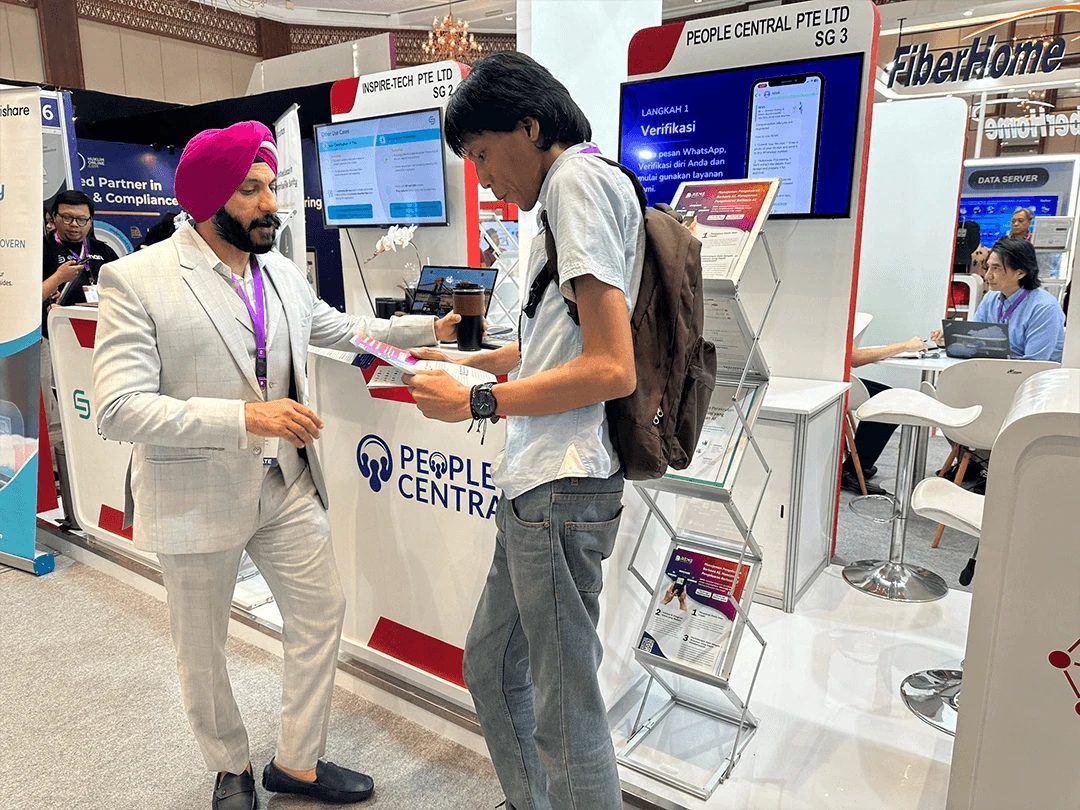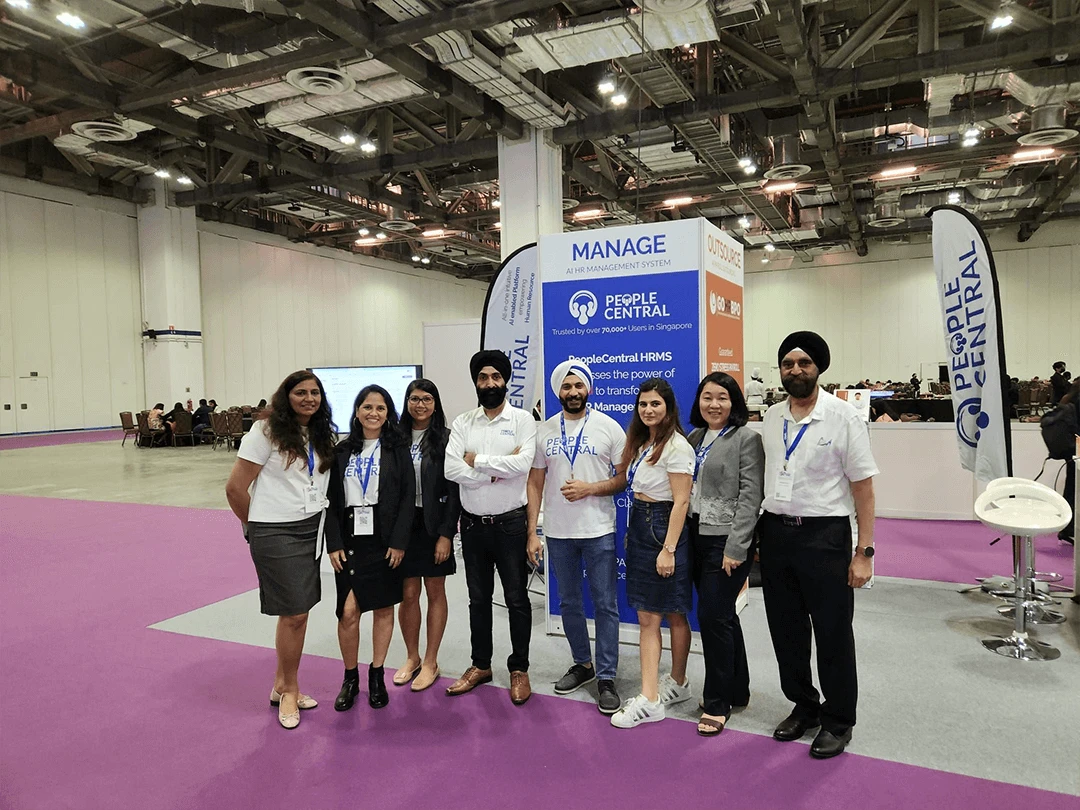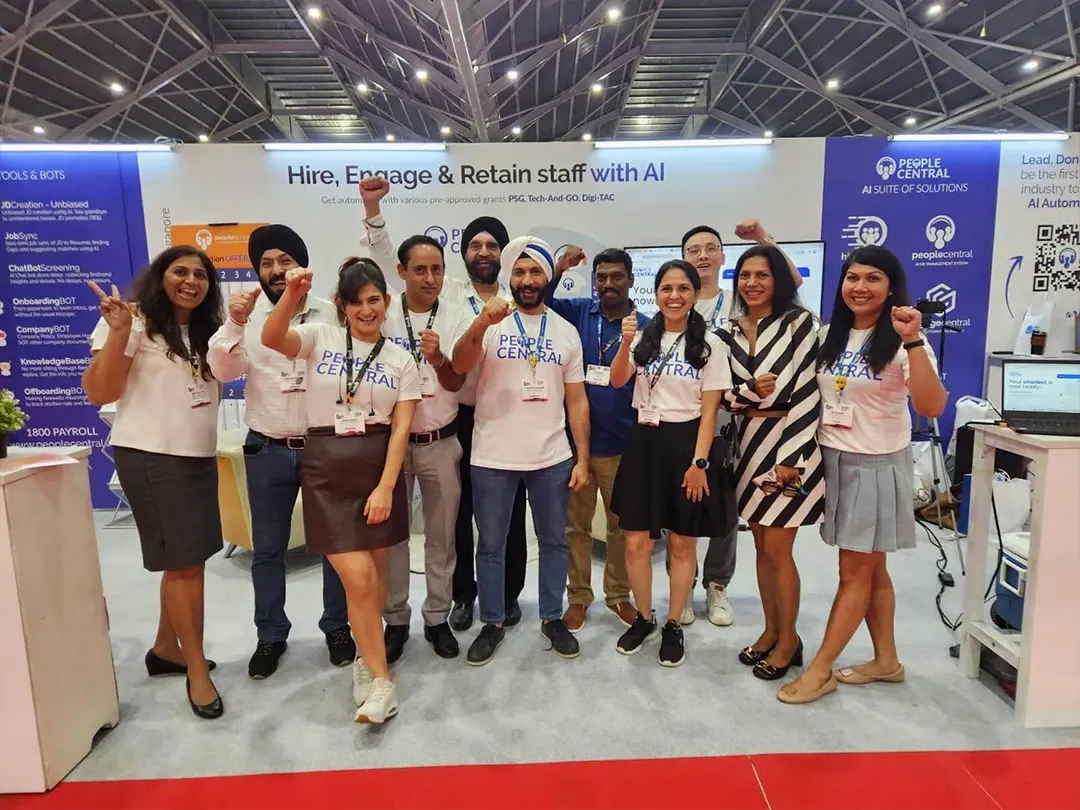Artificial Intelligence (AI) has revolutionized many industries, including Human Resource Management Systems (HRMS). AI-powered exit interviews and attrition analysis are two innovative tools that have transformed the way HR departments approach employee turnover.
AI algorithms analyze textual responses from employees during exit interviews. These algorithms are trained to detect patterns and sentiment. This helps organizations gain deep insights into attrition trends and identify potential areas for improvement.
AI-powered attrition analysis offers many advantages over traditional methods. It processes data in real-time, eliminating human errors and biases. To maximize effectiveness, organizations should:
| 1. Standardize exit interview questions |
| 2. Develop a feedback loop |
| 3. Encourage anonymous feedback |
| 4. Leverage predictive analytics. |
By embracing AI-powered exit interviews and attrition analysis, organizations can gain a competitive edge in talent management. These tools provide insights into why employees leave and offer steps to reduce attrition rates. With the right implementation and continuous improvement, HR departments can use the power of AI to optimize their workforce strategies and enhance employee retention efforts.
Understanding Exit Interviews
Exit interviews are a must for understanding staff departures. By analyzing this data, companies can gain valuable insights into their workforce and make informed decisions to improve employee retention. AI-powered exit interviews and attrition analysis in HRMS take the process to a new level. Companies can delve deeper into the data and uncover hidden patterns.
In today’s business world, organizations must keep up with understanding employees’ needs and motivations. With exit interviews, companies gain direct feedback from departing employees. This allows them to identify areas for improvement and make strategic changes. AI-powered exit interviews can analyze large amounts of data in real-time, extracting key themes and sentiment analysis to reveal underlying trends.
AI’s power is not just in getting valuable insights; it can also perform attrition analysis. By combining exit interview data with performance metrics, tenure, and compensation history, HR professionals can create predictive models to detect potential turnover. This proactive approach allows organizations to intervene before it’s too late and take targeted actions to retain talent.
Using AI technology alone is not enough. It needs to be leveraged effectively by integrating it into the HR strategy. Aligning AI-powered exit interviews with talent management initiatives can create a holistic picture of each employee’s journey. This shows employees that their voices are heard throughout their employment lifecycle.
The Importance of Exit Interviews in HRMS
Exit interviews are essential for HRMS. They let companies know why people leave and how to improve. Analyzing this data helps lower attrition rates and keep staff. The interviews also tell us about job satisfaction, workplace culture, managerial efficiency, and job expectations. They can even reveal patterns or issues of multiple employees, enabling HR teams to take targeted action.
Moreover, AI-driven exit interviews bring speed and precision. Machine learning algorithms can interpret vast amounts of data fast. AI-tools can spot key themes or trends from thousands of responses, allowing HR pros to focus on the important stuff.
AI-powered attrition analysis provides deeper insights into employee turnover. By combining interview data with other metrics like performance reviews and engagement surveys, HR teams can develop tailored retention strategies.
For example, a tech company recently used AI-driven exit interviews in their HRMS system. The machine learning algorithms and natural language processing techniques identified recurring themes among leavers. One was a lack of professional development options. By investing in training and career advancement, employee satisfaction and retention rose.
AI-Powered Exit Interviews
Exit interviews are a key part of employee offboarding. AI-powered exit interviews now harness the power of tech to enhance the process. They use algorithms and natural language processing to gain deeper understanding and uncover hidden patterns in employee attrition.
AI-powered exit interviews offer lots of benefits for HR departments. Firstly, they provide a standardized and consistent approach for collecting feedback from leavers. Plus, AI algorithms can detect sentiment analysis in responses, helping HR spot any issues or concerns that may have caused the employee to leave.
Also, AI-powered exit interviews quickly analyze data from past exit interviews and current responses. This helps organizations find trends and patterns that would be hard to identify manually. So, these insights help create strategies to address employee attrition and improve employee retention.
Deloitte found that companies using AI-powered exit interviews reduced turnover rates by 20% in the first year. This shows the effectiveness of AI in optimizing the offboarding process and keeping valuable talent in the organization.
Implementing AI-Powered Exit Interviews in HRMS
AI-powered exit interviews are key for HRMS. By using these advanced tools, organizations can gain insights that go beyond typical methods. Algorithms can detect sentiment, extracting explicit and implicit feedback from exiting employees. This helps HR pros understand why people leave and improve retention.
AI-driven exit interviews in HRMS provide comprehensive data on employee experiences. They can find significant reasons for leaving by analyzing factors like job satisfaction, work-life balance, management support, career advancement, and culture. HR teams can use these insights to address issues and make data-driven decisions about engagement strategies.
Also, AI-powered exit interviews show patterns or conditions that result in higher turnover for particular departments or teams. Organizations can use this info to spot areas that need attention and create tailored solutions to reduce attrition.
Pro Tip: To maximize the perks of AI-powered exit interviews, create a safe environment for departing employees. Encourage anonymity and confidentiality to ensure they feel comfortable being honest.
Challenges and Considerations
Artificial Intelligence (AI) has revolutionized the way firms conduct exit interviews and analyze attrition in their Human Resources Management Systems (HRMS). However, implementing AI-powered solutions for these processes comes with its own set of challenges.
Accurate data collection during exit interviews is one key challenge. AI tools must be able to capture and analyse qualitative information precisely, such as reasons for leaving or suggestions for improvement. This requires developing robust algorithms that can interpret and categorize responses accurately, regardless of variations in tone or language used by departing employees.
Privacy and confidentiality is another consideration. Exit interviews often involve sensitive information, so stringent data protection measures are essential. AI solutions should follow strict security protocols and guarantee employee data stays confidential throughout the analysis process.
Organizations must also evaluate the ethical implications of using AI for exit interviews. Whilst AI can streamline the process and provide useful insights, it is essential to strike a balance between efficiency and human touch. AI-powered systems should complement human judgement, instead of replacing it completely, to build trust among employees.
Pro Tip: When implementing AI-powered exit interviews and attrition analysis in HRMS, organizations should invest in comprehensive training programs for HR personnel involved. This will let them leverage AI tools effectively while keeping a personalized approach during employee offboarding.
Best Practices in AI-Powered Exit Interviews and Attrition Analysis
Exit interviews and attrition analysis have a vital role in understanding employee turnover. AI gives HR departments the power to gain valuable insights, improving their retention strategies. AI-enabled exit interviews allow companies to do automated interviews, analyze the data better, and spot trends for better decision-making.
AI can be used to have farewell conversations through chatbots or virtual assistants. This helps make sure the conversations are consistent and without bias. These systems use algorithms that understand answers, figure out sentiments, and get key themes. This means HR professionals get complete feedback without any subjective interference.
Furthermore, AI-powered attrition analysis goes beyond traditional methods by using data-driven techniques. Machine learning algorithms break down the data from the exit interviews into different components. These include demographics, job satisfaction, compensation, workload, career growth opportunities, and more. Patterns are found by correlating these factors with attrition rates and other organizational data.
This helps organizations to find high-risk employees and address their concerns before they leave. It also helps HR teams to spot problem areas by uncovering common themes among departing employees. Companies can then use this knowledge to implement targeted interventions, such as improved training programs or revised compensation structures.
An example of success is a technology company that used AI-powered exit interview system to reduce their attrition rate. By using machine learning models to analyze data from past interviews, they found key reasons for employee turnover and applied effective measures to address these issues. This saw a decrease in turnover and an increase in employee satisfaction.
Case Studies: Real-Life Examples of AI in Exit Interviews and Attrition Analysis
AI-driven exit interviews and attrition analysis are valuable to HR departments. Advanced algorithms, AI can decipher data from exit interviews and spot patterns, trends, and reasons for leaving.
A tech company used AI in their exit interview process. It picked up on common themes such as lack of career advancement opportunities and poor work-life balance. After implementing changes based on this, attrition rates decreased significantly.
Another example is a manufacturing company using AI to analyze employee feedback in exit interviews. The AI system pointed out “micromanagement” and “lack of recognition” as recurring words. This helped the company increase employee satisfaction and reduce turnover.
AI can predict attrition risk too. It looks at performance metrics, job satisfaction surveys, and employee demographics. This helps HR departments identify those who may leave and take action to retain them.
It’s worth noting that AI isn’t a replacement for human interaction. Exit interviews by HR experts are still needed to catch nuances that automated systems can’t.
Conclusion
Wrapping up this AI-powered exit interview and attrition analysis talk, it’s clear this technology has huge potential to revolutionize how businesses manage employee turnover. AI algorithms can give HR professionals insights into why employees leave, by analyzing job satisfaction, work-life balance, pay and career growth chances.
AI-powered exit interviews have many advantages over traditional HR ones. Automated interviews mean unbiased data collection, no subjective opinions and the AI can recognize patterns from numerous employees, to tackle the problem on a broader scale.
To maximize the effectiveness of AI-powered exit interviews and attrition analysis in HRMS, there are some steps to take:
| Step | Description |
|---|---|
| 1 | Regularly review and update questions – workplaces, and the reasons for employee attrition, are always changing. HR departments should stay updated on current issues that may affect retention. |
| 2 | Utilize sentiment analysis – this will provide deeper understanding of the feelings motivating people to leave and allow organizations to adapt their retention strategies. |
| 3 | Implement proactive measures – gather real-time employee feedback and conduct regular pulse surveys to address issues quickly and prevent attrition. |
AI-powered exit interviews and attrition analysis are key to retaining top talent and making long-term success. So, HR departments must embrace this transformative tech and use it to create a thriving workforce.
FAQs
Ques 1. How can AI-powered exit interviews and attrition analysis benefit HR management?
Ans 1. AI-powered exit interviews and attrition analysis in HRMS can provide valuable insights into the reasons behind employee turnover. By using AI algorithms to analyze employee responses, HR managers can identify patterns and trends that may contribute to attrition. This information can help HR teams develop effective retention strategies and improve overall employee satisfaction.
Ques 2. What are the key features of AI-powered exit interviews and attrition analysis in HRMS?
Ans 2. Some key features of AI-powered exit interviews and attrition analysis in HRMS include automated surveys and questionnaires, natural language processing for sentiment analysis, machine learning algorithms for data analysis, and predictive analytics to identify potential attrition risks. These features streamline the process, provide accurate results, and save time for HR professionals.
Ques 3. Can AI accurately analyze employee sentiments during exit interviews?
Ans 3. Yes, AI-powered systems can accurately analyze employee sentiments during exit interviews. Natural language processing algorithms can interpret text responses and gauge the sentiment behind them, whether positive, negative, or neutral. This allows HR managers to understand the underlying emotions and address the concerns effectively.
Ques 4. How can HR managers use AI-based attrition analysis to improve employee retention?
Ans 4. By analyzing historical attrition data using AI algorithms, HR managers can identify common patterns and factors leading to employee turnover. This information can then be used to develop targeted strategies to address these issues. HR teams can focus on improving employee engagement, addressing work-life balance, or enhancing career development programs, ultimately improving retention rates.








 5
5


























